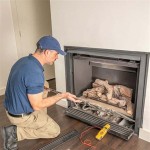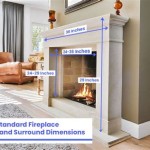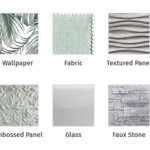Understanding Fireplace Glass Door Hinges: A Comprehensive Guide
Fireplace glass door hinges are a critical component of any fireplace enclosure system, providing the necessary mechanism for the glass doors to swing open and closed. These hinges are not merely decorative; they are essential for functionality, safety, and the overall performance of the fireplace. Selecting the right hinges, understanding their maintenance, and recognizing signs of wear and tear are all crucial for ensuring the longevity and efficiency of a fireplace.
The primary function of a fireplace glass door hinge is to allow for easy access to the firebox for tending to the fire, adding fuel, and cleaning. A reliable hinge ensures smooth operation, preventing the doors from sticking, binding, or becoming misaligned. Furthermore, properly functioning hinges contribute to the safety of the fireplace. They ensure the doors close securely, preventing sparks and embers from escaping the firebox and potentially causing a fire hazard. The design and material of the hinge also play a role in the overall aesthetic appeal of the fireplace, contributing to the finished look of the hearth.
This article will delve into the intricacies of fireplace glass door hinges, covering the various types available, the materials used in their construction, factors to consider when choosing hinges, and essential maintenance tips. Understanding these aspects will empower homeowners to make informed decisions regarding their fireplace enclosure systems.
Types of Fireplace Glass Door Hinges
Fireplace glass door hinges are available in various types, each designed to suit different fireplace styles, door weights, and aesthetic preferences. The selection of the appropriate hinge type is critical for ensuring proper functionality and longevity.
The most common types include: *
Butt Hinges:
These are traditional hinges consisting of two rectangular leaves joined by a pin. They are typically mortised into both the door and the frame, creating a flush finish. Butt hinges are known for their strength and durability, making them suitable for heavier glass doors. They offer a clean, simple aesthetic and are widely available in various sizes and finishes. *Surface Mount Hinges:
As the name suggests, these hinges are mounted directly onto the surface of the door and frame. They do not require mortising, making them easier to install. Surface mount hinges are often used for lighter doors or in situations where mortising is not feasible. While they may not be as aesthetically seamless as butt hinges, they offer convenience and versatility. *Offset Hinges:
These hinges are designed to move the door slightly away from the frame when opened. This feature is particularly useful for wider doorways or when the door needs to swing clear of obstructions. Offset hinges provide increased clearance and can improve accessibility. *Pivot Hinges:
Pivot hinges use a rotating pin at the top and bottom of the door, rather than along the side. This allows the door to swing open in either direction. Pivot hinges are often used for contemporary fireplaces and can handle heavy doors. They offer a unique aesthetic and provide a smooth, controlled opening and closing motion. *Spring Hinges:
These hinges incorporate a spring mechanism that automatically closes the door. Spring hinges are commonly used for safety purposes, ensuring the doors are always closed to prevent sparks and embers from escaping. They are particularly useful in homes with children or pets.The choice of hinge type will depend on several factors, including the weight and size of the glass doors, the fireplace design, and the desired aesthetic. Consulting with a professional installer is recommended to ensure the selected hinge type is appropriate for the specific application.
Materials Used in Fireplace Glass Door Hinge Construction
The materials used in the construction of fireplace glass door hinges significantly impact their durability, resistance to heat, and overall performance. Choosing hinges made from high-quality materials is essential for ensuring long-lasting and reliable operation.
The most common materials include: *
Steel:
Steel is a widely used material for fireplace door hinges due to its strength, durability, and affordability. Steel hinges are typically coated with a protective finish, such as black paint or powder coating, to prevent rust and corrosion. Heavy-duty steel hinges are capable of supporting the weight of even the largest glass doors. *Stainless Steel:
Stainless steel offers superior corrosion resistance compared to regular steel. It is an ideal choice for fireplaces that are exposed to moisture or humidity. Stainless steel hinges are also more resistant to high temperatures, making them suitable for fireplaces that generate significant heat. *Brass:
Brass hinges are known for their aesthetic appeal and corrosion resistance. They are often used in decorative fireplaces and can add a touch of elegance to the hearth. Brass hinges are typically more expensive than steel hinges but offer a refined look. *Cast Iron:
Cast iron hinges are extremely durable and can withstand high temperatures. They are often used in traditional fireplaces and offer a rustic aesthetic. Cast iron hinges are typically heavier than steel or brass hinges and may require more robust installation.The type of material selected should be carefully considered based on the fireplace environment and the desired aesthetic. Stainless steel or brass hinges are generally recommended for areas with high humidity or exposure to moisture. Steel or cast iron hinges are suitable for standard fireplaces where durability and strength are primary concerns. The chosen material should also be compatible with the other components of the fireplace enclosure system.
Factors to Consider When Choosing Fireplace Glass Door Hinges
Selecting the right fireplace glass door hinges involves careful consideration of several factors to ensure proper functionality, safety, and aesthetic appeal. Overlooking these factors can lead to issues such as door misalignment, sticking, or premature hinge failure.
Key factors to consider include: *
Door Weight and Size:
The weight and size of the glass doors are critical factors in determining the appropriate hinge type and size. Heavier doors require sturdier hinges made from durable materials such as steel or cast iron. Larger doors may also require multiple hinges to distribute the weight evenly and prevent sagging. The hinge's weight rating must exceed the door's weight to ensure safe and reliable operation. *Fireplace Design and Style:
The style of the fireplace should influence the choice of hinge design and finish. Traditional fireplaces may benefit from butt hinges made from brass or cast iron, while modern fireplaces may be better suited for surface mount or pivot hinges with sleek finishes. The hinge finish should complement the other hardware and accessories in the fireplace. *Frequency of Use:
Fireplaces that are used frequently require hinges that are built to withstand repeated opening and closing. Durable materials and robust construction are essential for ensuring longevity. Spring hinges may be a good option for fireplaces that need to be closed frequently for safety reasons. *Ease of Installation:
The ease of installation is an important consideration, especially for DIY projects. Surface mount hinges are generally easier to install than butt hinges, which require mortising. Ensure you have the necessary tools and expertise to install the chosen hinges correctly. *Corrosion Resistance:
Fireplaces that are exposed to moisture or humidity require hinges made from corrosion-resistant materials such as stainless steel or brass. This will prevent rust and ensure the hinges continue to operate smoothly over time. *Adjustability:
Some hinges offer adjustability features, allowing you to fine-tune the door alignment and ensure a proper seal. Adjustable hinges can be particularly useful for older fireplaces where the frame may be slightly warped or uneven. *Safety Features:
Consider hinges with safety features such as spring-loaded closures to prevent the doors from being left open accidentally. This can help reduce the risk of sparks and embers escaping the firebox.By carefully considering these factors, homeowners can select fireplace glass door hinges that meet their specific needs and ensure the safe and efficient operation of their fireplace.
Maintaining Fireplace Glass Door Hinges
Proper maintenance of fireplace glass door hinges is essential for ensuring their longevity and optimal performance. Regular cleaning, lubrication, and inspection can prevent issues such as sticking, squeaking, and corrosion.
Essential maintenance tips include: *
Regular Cleaning:
Clean the hinges regularly to remove dust, soot, and debris that can accumulate over time. Use a soft cloth or brush to wipe down the hinges. For stubborn dirt, use a mild detergent and water solution. Avoid using harsh chemicals or abrasive cleaners that can damage the hinge finish. *Lubrication:
Lubricate the hinges periodically to ensure smooth operation and prevent squeaking. Use a silicone-based lubricant or a dry lubricant specifically designed for hinges. Avoid using oil-based lubricants, as they can attract dust and debris. Apply the lubricant sparingly to the hinge pin and moving parts. *Inspection:
Inspect the hinges regularly for signs of wear and tear, such as rust, corrosion, or loose screws. Tighten any loose screws and replace any damaged or worn parts. If the hinges are significantly corroded or damaged, consider replacing them entirely. *Adjusting Door Alignment:
Check the door alignment periodically and adjust the hinges if necessary. Misaligned doors can cause sticking, binding, or gaps that allow sparks and embers to escape. Use a screwdriver or wrench to adjust the hinge position as needed. *Protect Hinges from Excessive Heat:
While fireplace hinges are designed to withstand high temperatures, prolonged exposure to excessive heat can damage the finish and weaken the metal. Avoid placing flammable materials close to the hinges and ensure the fireplace is properly ventilated. *Professional Inspection:
Consider having a professional fireplace technician inspect the hinges annually as part of a comprehensive fireplace maintenance program. A professional can identify potential issues early and recommend appropriate repairs or replacements.By following these maintenance tips, homeowners can extend the lifespan of their fireplace glass door hinges and ensure their continued safe and efficient operation.

Glass Fireplace Doors Pro Tips On How To Install Them

Value Fireplace Doors Essential Collection Stoll Industries

Eagle View Fireplace Brandner Design

Fireplace Doors And Chimney Authority

Fireplace Doors And Chimney Authority

Eagle View Fireplace Brandner Design

Fireplace Doors What Part Am I Missing Doityourself Com Community Forums

42gdk Standardbifoldglassdoors The Cozy Cabin Stove Fireplace Parts

Stoll Rustic Collection Sliding Door Fireplace Doors For Existing Fireplaces Mazzeo S Stoves

Newport Fireplace Glass Door For Masonry Fireplaces
Related Posts








